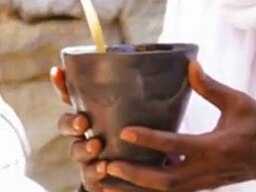Beverages of Ethiopia: Tella (Beer) and Siwa (Mead)
We have many customers that regularly come to the store to purchase significant quantities of grains and extracts, eg Caramel 10-90, Special B (120), sorghum, etc. I’ve learned that they’re making Tella, and sometimes Siwa. I’d never heard of them, so decided to do the research. I hope it inspires you to try it and let us know what you discover.
What are Tella and Siwa?
In the world of Ethiopian beverages, Tella and Siwa reign supreme. Rich in history and tradition, these drinks offer a glimpse into Ethiopia’s cultural landscape. Tella is Ethiopia’s version of beer, while Siwa is closer to mead, crafted predominantly from honey. These beverages, part of the fabric of Ethiopian social life, are prepared in advance for celebrations, religious ceremonies, or even just a casual gathering.
The history of Tella and Siwa is ancient, apparently dating back to the era of the Axumite Empire (3rd-6th century CE, near current Eritrea). While their precise origins are unclear, the legacy of these beverages, passed through countless generations and family recipes, is indisputable (as evidenced by our customers that are still making them today).
Primary Ingredients and Recipe for One Gallon
Tella shares some similarities with traditional ales due to its top-fermentation process and robust flavors, setting it apart from crisper, bottom-fermented lagers. Siwa, on the other hand, is like hydromel in terms of its lighter consistency.
Tella
- Grains: 3 lbs of barley (alternatives: maize or sorghum)
- Hops: 0.5 oz (adjust based on your preference for bitterness)
- Gesho Leaves: 1 oz, dried and crushed
- Water: 1 gallon
- Preparation: Gather and mill the grain (or use extract).
- Fermentation: Boil with water, adding hops and Gesho leaves. Let it cool and ferment for 4-5 days.
- Extraction and Bottling: Strain out the solid residue and bottle the liquid. Let it sit for an additional 1-2 days before bottling or serving.
Siwa
- Honey: 2.5-3 lbs (adjust for sweetness)
- Gesho Leaves: 1 oz, dried and crushed
- Water: 1 gallon
- Preparation: Mix honey and water to create a uniform solution.
- Fermentation: Add Gesho leaves and let it ferment for 2 weeks to a month, depending on desired strength.
- Extraction and Bottling: Strain, bottle, and allow the beverage to mature. Like wine, the longer it ages, the smoother it becomes.
Fermentation Alternatives to Gesho
Gesho (Rhamnus prinoides) is an indigenous African plant, more specifically found in Ethiopia. The leaves and stems of the Gesho plant are traditionally used as a fermenting agent in brewing Tella and Siwa, but they also add a unique flavor. Gesho is not particularly easy to procure, but there are alternatives for fermentation and flavor.
Fermenters:
- Brewer’s Yeast: Particularly suitable for Tella, ale yeast can be a good alternative.
- Wild Fermentation: Leave the brew open to wild yeasts in the environment.
- Bread Yeast: Workable, but not ideal.
- Wine Yeast: Particularly useful for Siwa due to its similarities with mead.
Flavorings:
- Tolosa is a wild root that is sometimes added to Tella during its preparation. It’s believed to enhance the taste of the beer and possibly influence its clarity.
- Mitmita is a spicy blend made primarily from African bird’s eye chili peppers, cardamom seeds, cloves, and salt. While it’s more known as a seasoning for food, it can occasionally be added to Tella for a spicy kick.
- Besobela is an Ethiopian basil that’s used in various Ethiopian dishes and sometimes in Tella to impart a unique aroma and flavor.
- Korerima, known as Ethiopian cardamom or false cardamom spice, can be added to influence the aromatic profile of the beer.
- Tenadam is another type of root often used in traditional Ethiopian herbal medicine and might occasionally find its way into Tella brews.
- Bekel, the fruit of a tree, is sometimes used in the fermentation of Tella, adding a unique flavor.
- Moringa, known as the “tree of life,” is a more modern addition that offers nutritional value and an innovative twist in flavor.
Try It!
Tella and Siwa are legacies of Ethiopia’s rich history and culture (and a great example of “Ferment This!”). We’ve chatted with the customers and tasted their homebrew … it’s easy to imagine generations of tradition. Hopefully, this article not only informs but also inspires you to further explore this interesting addition to our common notions about “beer” and “mead”.
If you’re a Tella or Siwa homebrewer, please reply below and tell us about your experiences (and correct any of my research above!). If you’re new to Tella and Siwa, please post your questions below and perhaps someone from the community can help us answer them.
Letenachin (L’-TAY-nah-chin)!
(that’s Cheers! in Amharic)





